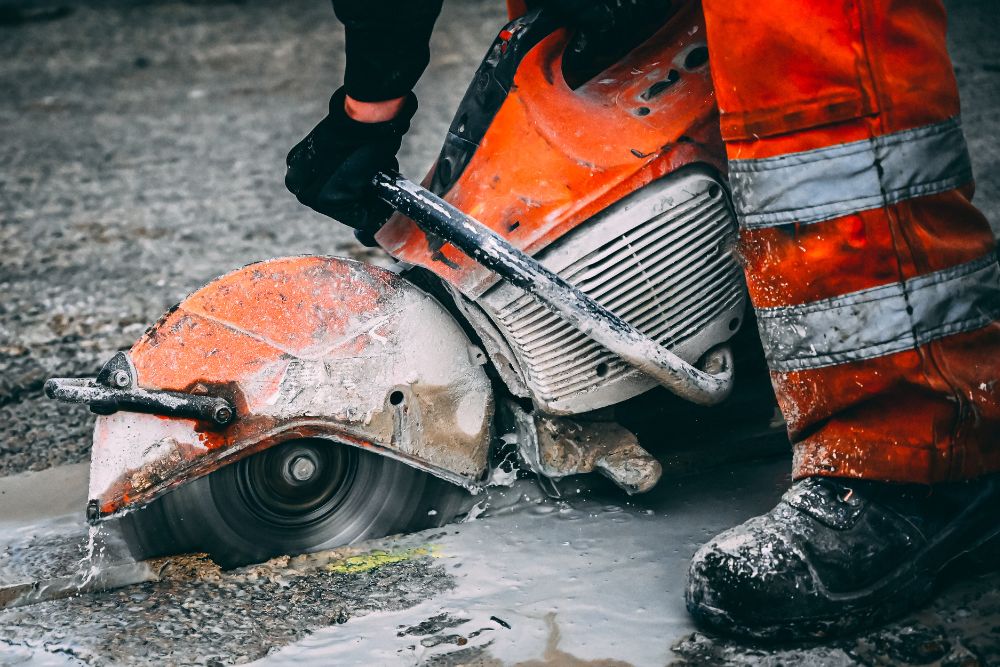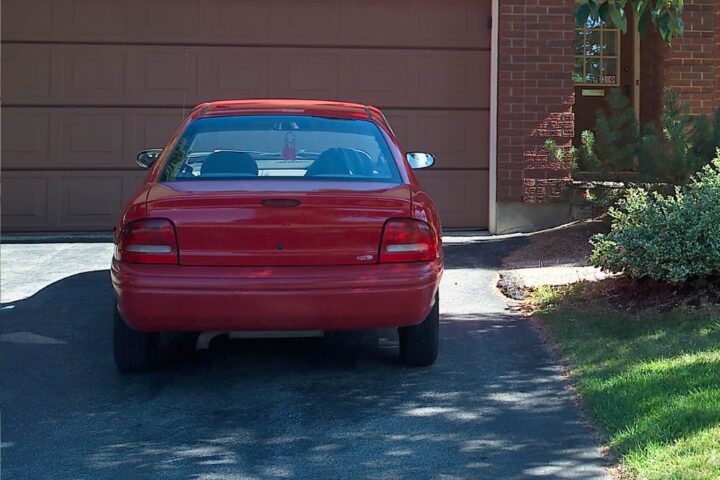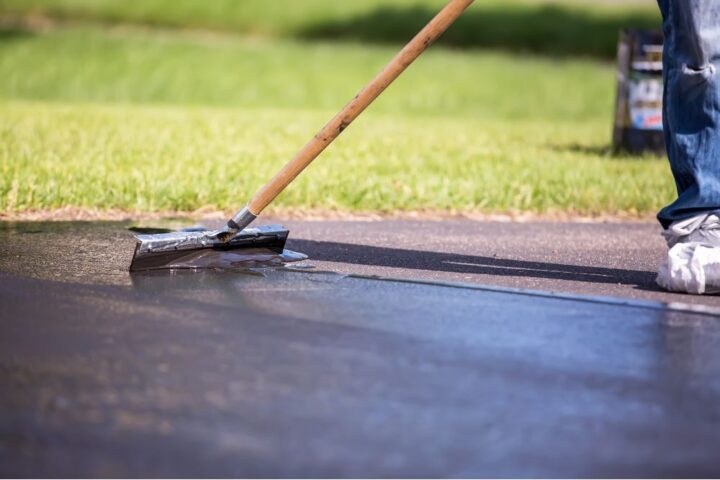Saw cutting a concrete driveway is a question often asked by homeowners looking to make alterations or repairs. While the answer is a resounding yes, it is crucial to approach this task with caution and seek professional guidance.
This article will explore the benefits and risks associated with saw cutting concrete driveways, as well as the necessary steps, tools, and factors to consider. By understanding the intricacies involved in this process, you will be better prepared to make informed decisions and ensure the longevity and integrity of your concrete driveway.
So, let’s dive into the world of saw cutting concrete driveways and uncover the secrets to a successful project.
Benefits of Saw Cutting Concrete Driveways
Saw cutting concrete driveways offers numerous advantages that contribute to their longevity, durability, and aesthetic appeal. The use of a concrete saw blade allows for precise cuts, ensuring clean finishes with straight lines. This enhances the overall appearance of the driveway, giving it a professional and polished look.
One of the primary benefits of saw cutting is that it prevents uncontrolled cracking. By strategically cutting the concrete, contractors can control where cracks occur, minimising their impact on the driveway’s structural integrity. This technique also helps in effective drainage, as it prevents water from pooling on the surface, reducing the risk of damage due to water seepage.
Moreover, saw cutting allows for the expansion and contraction of the concrete. This is particularly important in areas with extreme temperature fluctuations. By creating joints through cutting, the concrete can expand and contract without causing cracks or damage.
To achieve precise cuts, diamond blades are often used in concrete cutting. These blades are designed to withstand the hardness of concrete and provide clean and accurate cuts. They are durable and long-lasting, making them ideal for saw cutting projects.
Risks Associated With Saw Cutting Concrete Driveways
As with any construction process, there are inherent risks to consider when saw cutting concrete driveways that can impact both the safety and structural integrity of the project. One of the main risks is potential exposure to silica dust, which is a known respiratory hazard during saw cutting. This dust can be released into the air when using diamond blades to cut through the concrete.
Another risk is the possibility of injury from the high-powered and potentially dangerous equipment used for concrete cutting. It is important to handle these tools with caution and wear appropriate protective gear.
In addition, there is a risk of creating uncontrolled cracking or weakening the edges if the timing and depth of cuts are not accurate. This can lead to structural compromise and potential damage to the driveway. It is also crucial to carefully consider the location and depth of cuts to avoid damaging underground utilities or plumbing.
Furthermore, if the expansion joint cutting and pattern of saw cuts are not executed in accordance with structural engineering specifications, there is a risk of compromising the structural integrity of the driveway. This is particularly important when considering factors such as compressive strength and steel reinforcement.
Given these risks, it is recommended to hire a professional for saw cutting concrete driveways, especially if the project is complex or extensive. However, if it is a simple DIY project, it is important to use appropriate safety measures such as wearing a mask to protect against silica dust and using a wet blade to minimize dust and heat generation.
Steps to Successfully Saw Cut a Concrete Driveway
To achieve optimal results and minimise potential risks, it is crucial to follow a series of carefully planned steps when saw cutting a concrete driveway. Here are four essential steps to successfully saw cut a concrete driveway:
- Using the right equipment: Ensure that you have the appropriate tools for the job, such as diamond blades and handheld saws. The diamond blades are specifically designed for cutting through concrete, and handheld saws provide better control and manoeuvrability.
- Marking the joints: Before starting the cutting process, make sure to mark the joints using a chalk line. This will help you maintain a straight line and ensure accurate cuts.
- Analysing curing techniques: It is essential to consider the curing techniques used for the concrete. Cutting too early can cause cracks, while cutting too late can result in raveling. Analyse the concrete’s curing process to determine the ideal timing for saw cutting.
- Ensuring safety: Prioritise safety by using the required personal protective equipment (PPE), such as goggles, gloves, and ear protection. Additionally, pay attention to the weight of the saw and use proper lifting techniques to prevent injuries.
Tools Required for Saw Cutting Concrete Driveways
When it comes to saw cutting concrete driveways, there are several tools that are essential for the task.
One of the most important tools is a concrete saw, specifically designed for cutting tough concrete with precision.
Additionally, diamond blades are necessary for efficient and durable cutting.
Personal protective equipment, such as eye and hearing protection, is crucial for safety.
Safety Precautions for Saw Cutting
To ensure safe and efficient saw cutting of concrete driveways, it is imperative to employ the necessary tools and equipment while adhering to proper safety precautions. Here are some important safety precautions to consider:
- Wear appropriate personal protective equipment (PPE) such as safety glasses, ear protection, and respiratory protection to protect yourself from potential hazards.
- Use concrete saws with diamond blades for clean and efficient cuts, as they are specifically designed for cutting through concrete.
- Let the weight of the saw do the work, instead of applying too much pressure, to prevent accidents and maintain control.
- Before cutting, use a chalk line to mark the desired cutting path, ensuring accuracy and precision.
Proper Technique for Saw Cutting
For the proper technique of saw cutting concrete driveways, it is essential to have the necessary tools, including a specialised concrete cutting blade circular saw, diamond blades, wet-cutting equipment, chalk line, and personal protective equipment (PPE). These tools are crucial for achieving precise and professional concrete cuts. Additionally, using diamond blades allows for efficient cutting, as they are designed to withstand the tough nature of concrete. To save time and ensure accuracy, it is important to select where these cuts will be made, marking the joints with a chalk line. The blade spin should be adjusted to the appropriate speed, and the edge of the blade should be guided along the marked line. By following these techniques, working with concrete driveways can be done effectively and efficiently.
| Tools Required for Saw Cutting Concrete Driveways |
|---|
| Specialised concrete cutting blade circular saw |
| Diamond blades |
| Wet-cutting equipment |
| Chalk line |
| Personal protective equipment (PPE) |
Factors to Consider When Deciding to Saw Cut a Concrete Driveway
When deciding to saw cut a concrete driveway, there are several factors that need to be considered.
Firstly, safety considerations must be taken into account to ensure the well-being of workers and bystanders.
Additionally, the cost and time implications of the saw cutting process should be carefully evaluated to determine its feasibility and practicality.
Safety Considerations
Consulting a professional is crucial when considering the safety factors involved in saw cutting a concrete driveway, as this technical process requires expertise and experience.
To ensure a safe and effective saw cutting operation, the following safety considerations should be taken into account:
- Personal protective equipment (PPE): It is essential to wear appropriate PPE, including safety goggles, gloves, and ear protection, to protect against potential hazards such as flying debris and loud noise.
- Diamond blades: The use of high-quality diamond blades is important for efficient cutting and reducing the risk of blade breakage or damage.
- Stream of water: Keeping a continuous stream of water on the cutting blade helps control dust and keeps the blade cool, preventing overheating and potential accidents.
- Handheld concrete saw: Using a well-maintained, properly adjusted handheld concrete saw ensures better control and reduces the risk of kickbacks or loss of control.
Cost and Time Implications
To accurately assess the feasibility of saw cutting a concrete driveway, it is essential to evaluate the cost and time implications associated with this decision.
The cost implications of saw cutting a concrete driveway can vary depending on several factors. These factors include accessibility, square footage, concrete thickness, type of concrete, and permits. Hiring a professional for the task may be more cost-effective, especially for complex or high-precision projects. On average, the cost for concrete cutting ranges between $540 and $1,660, or $2 to $3 per square metre.
Additionally, it is important to consider the time implications of saw cutting. The size of the driveway and the amount of reinforcement in the concrete slab can affect the duration of the cutting process. It is crucial to allocate enough time for the task to be completed safely and efficiently.
Proper Maintenance and Care for Concrete Driveways After Saw Cutting
Proper maintenance and care for concrete driveways after saw cutting is crucial to ensure their long-term durability and resilience. Here are some important steps to take in order to maintain and care for a saw-cut concrete driveway:
- Regular cleaning and sealing: Clean the driveway regularly to remove dirt, debris, and stains. Apply a concrete driveway sealer to protect the surface from oil stains, UV rays, and other environmental factors. This will extend the lifespan of the driveway.
- Prompt repair of cracks and damage: Address any cracks or damage in the concrete promptly. Use patching materials to repair the affected areas and prevent further deterioration.
- Monitoring expansion joints: Keep an eye on the expansion joints, as these are vulnerable areas where water can seep in. Reseal them as needed to prevent water intrusion and maintain the structural integrity of the driveway.
- Proper handling of cut pieces: During the saw cutting process, pieces of concrete will be produced. Handle these pieces carefully to avoid any injuries or damage to the surrounding area. Dispose of them properly.
Frequently Asked Questions
How Thick of Concrete Can a Saw Cut?
The maximum depth for saw cutting concrete depends on various factors such as the slab thickness, structural engineering specifications, and load transfer requirements. Different types of concrete saws are available for cutting varying thicknesses, and achieving a clean and precise cut in thick concrete requires proper technique and safety precautions. Professional saw cutting services offer benefits such as expertise, experience, and innovations in technology for cutting thick concrete without damaging the surrounding area.
Can You Use a Regular Saw to Cut Concrete?
Yes, a regular saw can be used to cut concrete, but it is not recommended. For proper saw cutting techniques, safety precautions, and achieving the best results, it is advisable to use specialised saw blades and follow professional practices.
Can Concrete Be Cut With a Hand Saw?
Yes, concrete can be cut with a hand saw, but it has limitations in terms of depth and speed. Safety precautions, such as wearing PPE, should be taken. Hiring professionals or using alternative methods may provide cleaner cuts and avoid common mistakes. Consider cost implications.
Can You Saw Cut Concrete After Its Cured?
Yes, it is possible to saw cut a concrete driveway after it has cured. Proper planning, timing, and considerations such as selecting the right location, pattern, and depth of the cuts are essential for achieving clean and precise cuts while ensuring structural integrity and preventing cracking. Using the right tools and following safe cutting techniques is crucial for a successful saw cutting process.
Conclusion
In conclusion, saw cutting a concrete driveway can be a complex task that requires professional expertise. Hiring a professional ensures accuracy and efficiency, preventing potential mistakes and damage. Factors such as timing, location, depth, and tools must be carefully considered.
By consulting a professional, individuals can save time and effort while achieving high-quality results. Proper maintenance and care after saw cutting are also important for the longevity of the concrete driveway.
If you need your concrete driveway cut, be sure to contact us on 0403 292 005 or luke@smoothconcrete.com.au.




